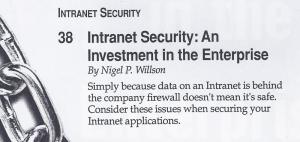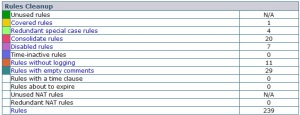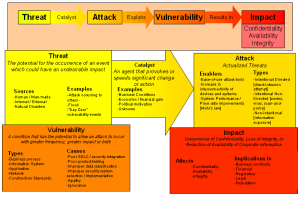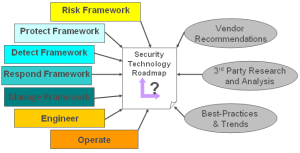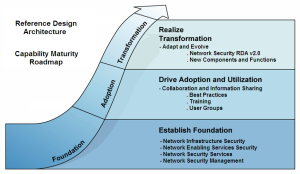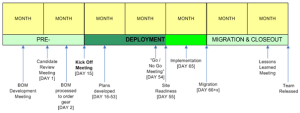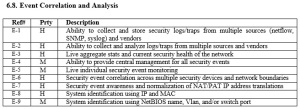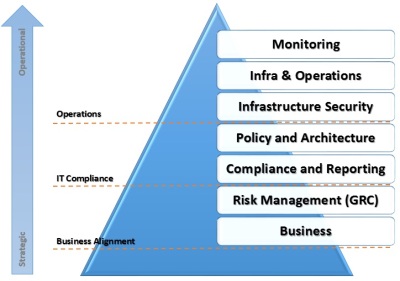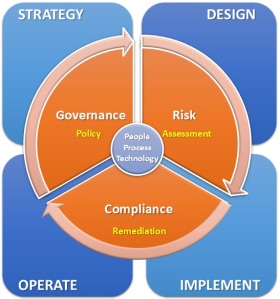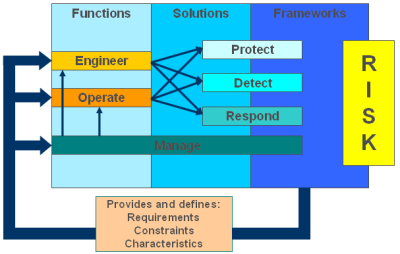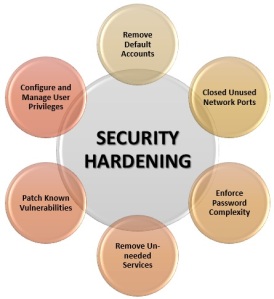vCISO Smart Practices – Part 1
May 23, 2014 2 Comments
vCISO Smart Practices – Part 1: Enabling Success via Collaboration Infrastructure
The Internet of Things offers a tremendous opportunity for businesses to truly transform themselves by realizing the potential of data that is sitting, untapped, in existing infrastructures. The challenge to unlocking that data is the evolution towards a Secure Collaboration Infrastructure.
This blog introduces our vCISO Smart Practices series which kickoff with a fundamental discussion on the importance and value of human collaboration and teamwork as a foundational cross-discipline cross-functional ‘Architecture Team’. We also offer an introduction to the blog author, Nige the Security Guy (@NigeSecurityGuy).
This blog series will later address a truly distributed security architecture that supports the Collaboration Infrastructure and applies Smart Practices to that as we evolve rapidly towards the new and exciting yet challenging IOT.
“Training often gives people solutions to problems already solved.
Collaboration addresses challenges no one has overcome before.” Marcia Conner
Sharing and Reciprocity
Collaboration and sharing is a sophisticated skill that asks people who work together to look beyond personal interests towards outcomes benefiting the whole. Collaboration and sharing is a great way to address complex challenges, since it has the potential to tap communal creativity and unleash true innovation and earn genuine buy-in.
Collaboration, at the conceptual level, involves:
- Awareness – We become part of a working entity with a shared purpose
- Motivation – We drive to gain consensus in problem solving or development
- Participation – We participate in collaboration and we expect others to participate
- Mediation – We negotiate and we collaborate together and find a middle point
- Reciprocity – We share and we expect sharing in return through reciprocity
- Reflection – We think and we consider alternatives
- Engagement – We proactively engage rather than wait and see
Together we can build a safe and increasingly more secure environment …
“Security done right is a business enabler that dramatically reduces total cost of ownership (TCO) providing a tangible Return on Security Investment (ROSI).
IT complexity and fragmentation replaced by an adaptive modular and flexible architecture enables agility and improves your competitive edge — so the business can refocus quickly as new opportunities emerge.” Nigel P. Willson
A critical success factor towards successfully deploying a collaboration infrastructure is orchestrated policy, focused resources and, well-defined process that fully leverages and unlocks technology. As a creative solutions-focused, charismatic, and passionate security evangelist Nigel Willson is available to consult as a Trusted Security Services Partner to collaboratively assist organizations to iteratively improve and optimize their security as a virtual team member in the role of vCISO, IT Security Strategist and, Architect.
Nige the Security Guy: Professional Profile
Nigel P. Willson
Principal Security Architect
AT&T Security Solutions
Nigel Willson is a Principal Security Architect at AT&T with 30 years of experience in Security Operations, Management, Research, Development and Security Services providing thought leadership, architecture/design and practical strategy.
Nigel has responsibilities as Security SME for AT&T complex cyber security solutions across the portfolio of security consulting, managed security services and mobile security solutions.
He specializes in collaboration as both a Trusted Advisor and Virtual Chief Information Security Officer (vCISO) helping companies to evolve and improve their security capability maturity and posture in the following areas:
- IT Security Governance, Strategy, Roadmap
- Security Architecture & Design (including adaptive security architecture lifecycle)
- Security Operations (including advanced threats, detection frameworks, defensible posture)
- Threat Intelligence & Risk Management (focused on business processes)
- Security Research & Analyst
- Regulatory Compliance
AT&T Security Solutions is the AT&T Advanced Enterprise Solutions customer facing security opportunity team. His participation is consistently solicited by AT&T teams and AT&T customers as both a Trusted Advisor and Security SME in both the private and public sectors. Nigel joined AT&T as a Practice Director, Security via the acquisition of Callisma (AT&T Consulting Solutions) in 2005.
Prior to joining AT&T, Nigel worked as a Practice Director, Security for Avaya Converged Security as well as TCS America responsible for the development of discrete security consulting services and leading teams of security consultants. He previously worked as the Director, Security for The Walt Disney Company focused on global Internet Security for 27 business units including ABC, Disney On-Line, and ESPN.
Nigel is a former assembler programmer and reverse engineer (ethical hacker) with a diverse international background. He has worked on U.S. DoD projects developing security products and technology for the World-Wide Military Command and Control System (WWMCCS) and Military Airlift Command Deployment Flow (MACDF).
He is a published author of many security guides, books, magazine articles and currently operates a security-focused NigeSecurityGuy blog providing impartial practical advice and methodology on security architecture, assessments and, advanced persistent threats (APTs). Nigel also operates the ‘Solving the APT Defense Puzzle’ group on Linked-In, a reference library of useful research and topics.
Nigel was recently selected as a finalist in the InfoSec Europe 2014 Security Bloggers awards and was invited to publish an article on Leveraging Security as a Business Enabler.
Nigel’s passion is taking blog readers Back to Basics to focus on key security principles to develop a strong architectural foundation (Security Architecture Series) and from that add advanced threat defense (APT Strategy Guide) as well as security operations optimization (NG-OPS Strategy Guide).
“Never doubt that a small group of thoughtful, committed citizens can change the world. Indeed, it is the only thing that ever has.”
Background Summary
- International Background — 30 years international experience gained as security expert across England, Australia, France and, the USA.
- Strategic Architect – Cloud-Orientated Architecture, BYOD, Mobile, Security Operations, Risk, Intelligence, Analytics, Metrics, Visualization – Situational Awareness: Detect, Contain, Investigate, Eradicate, Recover
- Director, Security @ Disney – Establish strategic architecture team, develop successful proactive security management program.
- Published Author – Author and co-author of many security guides, books and, magazine articles.
- Security Consultant — 15 years thought leadership and strategy experience consulting to Fortune 500 companies.
- Security Engineer – Developed new security protocols and products for U.S. Department of Defense (DoD), e.g., MACDF and WWMCCS. Used in Gulf War. Worked on multi-level security and covert channel prevention.
- Reverse Engineer – Original assembler programmer, ethical hacker and reverse engineer who could analyze code and manipulate any technology, protocol or system.
- Awards Plaque: AT&T April 2008: In Recognition of Unwavering Commitment, Steadfast Leadership and Outstanding Performance on the California State University ITRP program.
Thanks for your Interest!
Nige the Security Guy.




